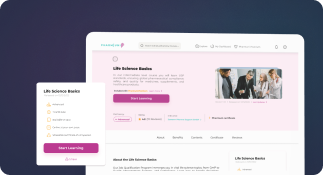Pharmacovigilance in Clinical Trials
Definition
Pharmacovigilance in clinical trials refers to the science and activities related to the detection, assessment, understanding, and prevention of adverse effects or any other drug-related problems during the clinical development phase of a pharmaceutical product. It plays a critical role in ensuring patient safety and maintaining the integrity of the clinical trial data.
Also known as PV clinical trial role, pharmacovigilance in this context focuses on monitoring investigational drugs to identify potential risks early and ensure compliance with regulatory requirements.
Detailed Explanation
Purpose and Importance
Pharmacovigilance in clinical trials is essential for protecting participant safety and ensuring the ethical conduct of research studies. It helps identify adverse events (AEs) and serious adverse events (SAEs) that may not have been previously observed. By doing so, it contributes to the risk-benefit assessment of investigational products and informs decisions about the continuation, modification, or termination of trials.
Key Activities in Pharmacovigilance During Clinical Trials
- Adverse Event Reporting: Collection, documentation, and reporting of AEs and SAEs to regulatory authorities and ethics committees.
- Signal Detection: Identifying new safety signals or trends from collected safety data.
- Risk Assessment: Evaluating the severity, frequency, and impact of adverse events.
- Risk Mitigation: Implementing safety measures such as protocol amendments, participant monitoring, or dose adjustments.
- Regulatory Compliance: Ensuring adherence to Good Clinical Practice (GCP) guidelines and local/global regulatory requirements (e.g., FDA, EMA, ICH).
Regulatory Context
According to the International Council for Harmonisation (ICH) E2A and E6 guidelines, sponsors are required to have systems in place for monitoring and managing safety data during clinical trials. Regulatory agencies such as the U.S. Food and Drug Administration (FDA) and the European Medicines Agency (EMA) mandate timely reporting of serious and unexpected adverse events.
Examples and Contexts of Use
Pharmacovigilance in clinical trials is applied across all phases of drug development:
- Phase I: Focuses on identifying dose-limiting toxicities and initial safety profile.
- Phase II: Expands safety monitoring to a larger patient population while assessing efficacy.
- Phase III: Continues safety surveillance in diverse populations and longer durations.
- Phase IV (Post-marketing): Though outside clinical trials, PV continues to monitor long-term safety.
For example, if a subject in a Phase II oncology trial experiences a previously unreported cardiac event, PV teams would document the event, assess its causality, and report it to regulators within required timelines. This data could lead to protocol adjustments or additional monitoring requirements.
Roles and Responsibilities
- Sponsor: Responsible for establishing a pharmacovigilance system and ensuring timely reporting.
- Investigator: Reports AEs to the sponsor and ethics committees.
- Clinical Research Organization (CRO): Often manages PV activities on behalf of the sponsor.
- Regulatory Authorities: Review safety data and enforce compliance.
Challenges in PV During Clinical Trials
- Under-reporting of adverse events by investigators
- Difficulty in establishing causality
- Data integration from multiple sites and systems
- Ensuring global regulatory compliance



